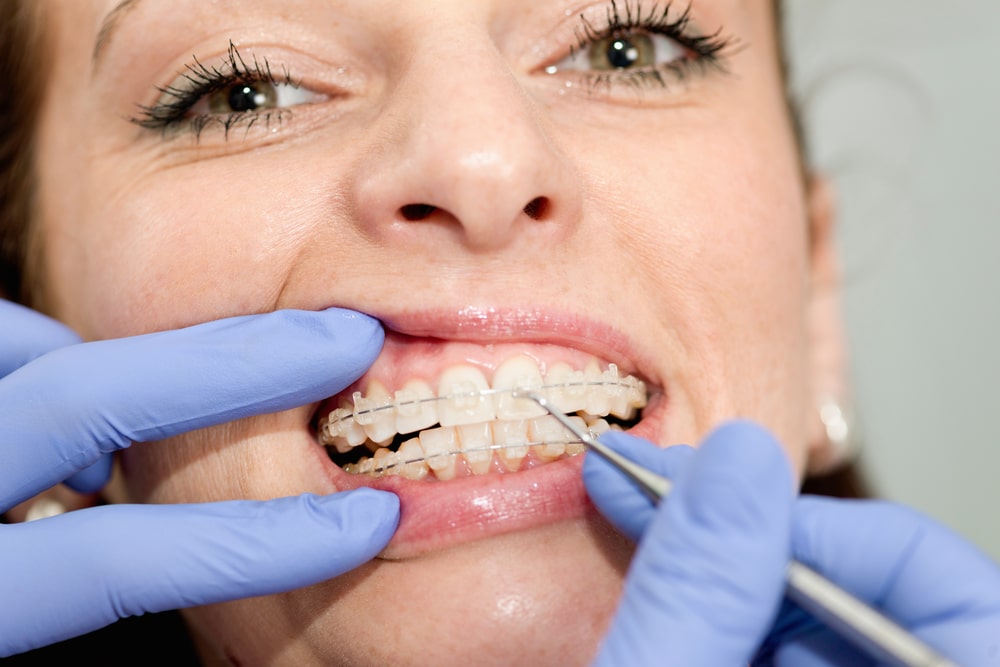An Unbiased View of Legacy Orthodontics
An Unbiased View of Legacy Orthodontics
Blog Article
4 Easy Facts About Legacy Orthodontics Described
Table of ContentsSome Ideas on Legacy Orthodontics You Need To KnowFacts About Legacy Orthodontics RevealedThe smart Trick of Legacy Orthodontics That Nobody is DiscussingGetting My Legacy Orthodontics To WorkSome Known Details About Legacy Orthodontics
In enhancement, we use flexible treatment timetables, flexible repayment options and an enjoyable, satisfying experience.An orthodontist is a dental expert trained to identify, avoid, and deal with teeth and jaw irregularities. Orthodontists work with people of all ages, from kids to grownups.
Malocclusion, or misaligned teeth, can bring about dental issues, including dental cavity, gum illness, and hard or unpleasant chewing. Not every person is born with straight teeth. If you have a negative bite or large areas between your teeth, you may intend to get in touch with a dental professional specializing in orthodontic treatment.
The Basic Principles Of Legacy Orthodontics
( Photo Credit History: DigitalVision/Getty Images) Orthodontists utilize dealt with and removable dental devices, like dental braces, retainers, and bands, to change the setting of teeth in your mouth. Orthodontic therapy is for oral abnormalities, including: Jagged teethBite issues, like an overbite or an underbiteCrowded teeth or teeth that are also much apartJaw misalignmentThe objective of orthodontic therapy is to enhance your bite.
While you might assume of orthodontists as mostly for children or teens that require braces, they can correct oral issues at any age. Orthodontists go to college, oral institution, and orthodontic school.
All orthodontists are dental professionals, however not all dental practitioners are orthodontists. Orthodontic residency programs offer extensive, focused guideline for oral professionals. They concentrate on 2 areas: Just how to correctly and safely relocate teeth How to properly lead growth in the teeth, jaw, and faceOnce an orthodontist has actually finished training, they have the option to end up being board accredited.
The Definitive Guide for Legacy Orthodontics
Imbalance, or malocclusion, is the most common factor people see an orthodontist. It is genetic and is the result of dimension distinctions in between the upper and reduced jaw or between the jaw and teeth. Malocclusion brings about tooth overcrowding, a misshapen jaw, or uneven bite patterns. Malocclusion is generally treated with: Your orthodontist attaches metal, ceramic, or plastic square bonds to your teeth.
If you have just small malocclusion, you might be able to use clear dental braces, called aligners, rather of conventional dental braces (https://www.producthunt.com/@legacyortho1). Some people need a headgear to help relocate teeth right into line with pressure from outside the mouth. After braces or aligners, you'll need to wear a retainer. A retainer is a customized gadget that maintains your teeth in location.
They can develop added space in the mouth without having to pull teeth. Orthodontists make use of wires, medical screws, or plates to sustain your jaw bone.
You might need to see an orthodontist if you have: Crowding or not sufficient space for all of your teethOverbite, when your top teeth come over your base teethUnderbite, when your base teeth are too much forwardSpacing or problems with gapsCrossbite, which is when your top teeth fit behind your bottom teeth when your mouth is closedOpen bite or a vertical void between your front base and upper teethMisplaced midline, when the facility of your base and upper teeth don't align Fixing a dental malocclusion can: Make attacking, eating, and talking easierImprove the balance of our face and your overall appearanceEase pain from temporomandibular joint conditionsSeparate your teeth and make them much easier to clean up, aiding stop dental caries or cavities It's typically a dental expert who initially notices misaligned teeth throughout a routine exam.
Legacy Orthodontics - Questions

Throughout your first orthodontic examination, you'll likely have: An oral examPhotos taken of your face and smileDental X-raysPanoramic (360 degree) X-rays of your face and headImpressions to develop mold and mildews of your teethThese examinations will certainly help your orthodontist know exactly how to proceed with your therapy. clear braces. An orthodontist is a dentist who's had training to treat your teeth and jaw
Orthodontists may perform surgical treatment, exams,X-rays,and even more to aid you attain a more comfortable, much healthier smile. An orthodontist is concentrated on your bite, so something like a chipped tooth would be dealt with by a dental practitioner. Orthodontists are dental practitioners however not all dental experts are orthodontists. Orthodontists are concentrated on your bite, or the way your teeth meshed, and the straightness of your teeth.
Ever before asked yourself just how celebrities constantly seem to have flawlessly lined up teeth? The answer frequently hinges on the experienced hands of an orthodontist. What exactly does an orthodontist do? Orthodontists are dental specialists who focus on fixing about his abnormalities in the teeth and jaws. Their experience goes past just developing a gorgeous smile; it encompasses improving your general dental wellness and feature.
The smart Trick of Legacy Orthodontics That Nobody is Talking About

, orthodontists have a varied toolkit at their disposal. These tried-and-true braces make use of a system of brackets adhered to the teeth and linked by cables.
These removable trays are tailor-made to gradually shift the teeth's setting. In situations of narrow jaws, palatal expanders can be utilized to produce room for appropriate tooth positioning.
Report this page